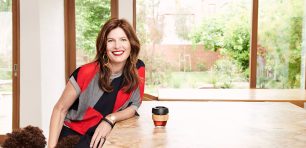
KeepCup's new Helix range. Source: supplied.
The key to changing consumers’ behaviour is reducing the barriers or “niggle factors” that are preventing the switch, according to KeepCup co-founder Abigail Forsyth.
This is the thinking behind the sustainability-focused brand’s latest product release, the Helix range, which hit the shelves last week.
The range features a number of screw-fit products, including a fully-sealed Helix cup and Helix cup-to-bottle kits, which adds to the company’s existing twist-apart water bottles.
Used together, the range allows users to quickly switch between the coffee cup and water bottle components, and thereby further reducing their use of single-use plastic cups and bottles.
Lugging around a reusable cup and a reusable bottle can be a “bit of a pain”, says Forsyth, and the new range is designed to ease that pain.
“So you can have your coffee in the morning, take the lid off and then turn to a bottle for the rest of the day. So really great when you’re on the move.”
Since it was founded in 2009, KeepCup has sold more than 10 million of its eponymous reusable cups across 75 countries. It branched into reusable water bottles in March this year, after a two-year delay.
The Helix range builds on these existing products, but Forsyth says the potential audience is much bigger than existing KeepCup users.
“If you drink coffee and you drink water, single-use water bottles, single-use cups, single-use packaging is on the way out,” she says.
“Inevitably it’s going to start being banned.

Source: supplied.
“So we have to change our habits either way.”
While sustainability may be the “logical reason” to stop using single-use products, says Forsyth, for many people, making the switch depends more on factors like design and convenience.
“The next phase of thinking about this is that we can’t buy our way out … so you have to have products that we use and continue to use for a really long period of time, and we enjoy using them. So they can’t break, they can’t be heard to clean, they can’t be hard to carry — all those factors.”
Forsyth says KeepCup operates by “we think about the pleasure of drinking and what are the annoying things that stop people reusing or stop people carrying products around, and then we try to overcome them in product design”.
To that end, the company has recently brought its design team in-house and Forsyth says they are working on a “robust pipeline” of more products to add to the KeepCup range, including ones made from recovered and recycled materials.
Handpicked for you

Becoming a B Corp: Lessons from KeepCup and Leor childcare



COMMENTS
SmartCompany is committed to hosting lively discussions. Help us keep the conversation useful, interesting and welcoming. We aim to publish comments quickly in the interest of promoting robust conversation, but we’re a small team and we deploy filters to protect against legal risk. Occasionally your comment may be held up while it is being reviewed, but we’re working as fast as we can to keep the conversation rolling.
The SmartCompany comment section is members-only content. Please subscribe to leave a comment.
The SmartCompany comment section is members-only content. Please login to leave a comment.